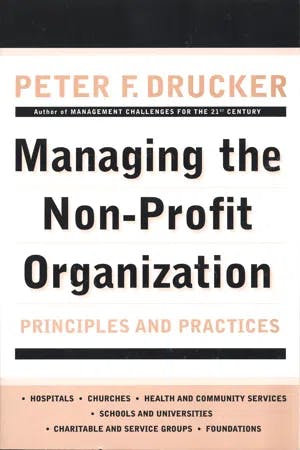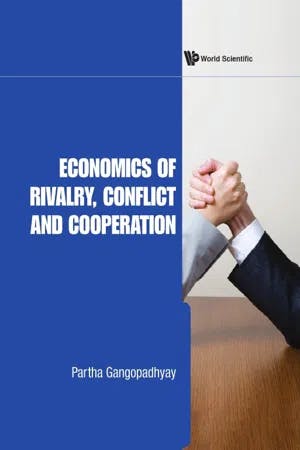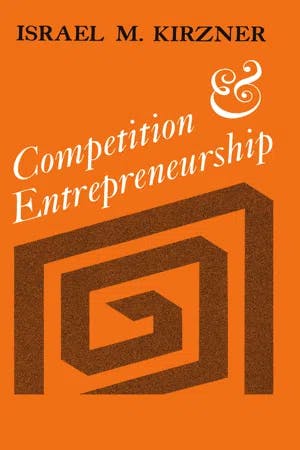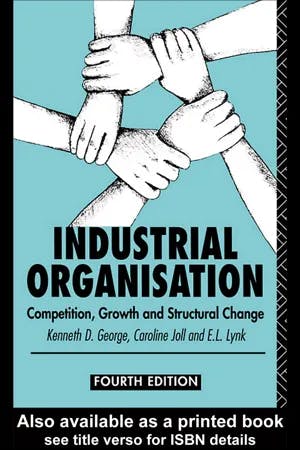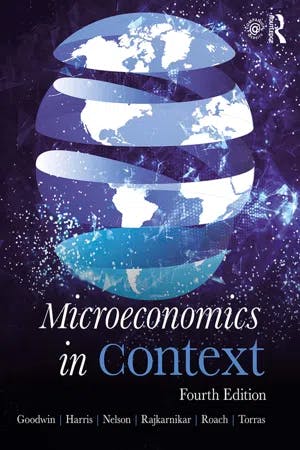What is Market Competition?
MA, Management Science (University College London)
Date Published: 17.10.2023,
Last Updated: 17.10.2023
Share this article
Defining market competition
Buyers and sellers interact in markets to purchase goods or services. When there is more than one seller in a market, it is said that there is market competition. Depending on the industry or sector, firms will try to differentiate from their competitors on the price, quality or quantity of the products and services they offer. This, in essence, is how market competition works.
Many economists, including Willian Stanley Jevons, Léon Walras or Adam Smith have studied the dynamics of competition in markets. However, French mathematician Augustine Cournot was notable for developing a mathematical model that described how companies compete on quantity, by altering their output in a given market. He describes his findings in his book Recherches sur les principes mathématiques de la théorie des richesses (Universalis, 2015) where he highlights the importance of bringing economics and mathematics together.
Suivant lequel les faits, les lois, les rapports s’enchaînent et procèdent les uns des autres. (According to which facts, laws and relationships are linked and proceed from one another.)
Encyclopaedia Universalis
Suivant lequel les faits, les lois, les rapports s’enchaînent et procèdent les uns des autres. (According to which facts, laws and relationships are linked and proceed from one another.)
Five characteristics of market competition
The definition of a competitive market is rather intuitive. However, there are situations where this definition is not enough to conclude whether a market is competitive or not. For example, say that you are looking to send a letter or postcard in the UK. Market data and research shows that most people will choose to post the letter into one of the red post boxes (operated by Royal Mail) around their city despite there being many alternatives to get the same job done. Therefore, even though there is more than one courier service in the market, not all of them are used equally. So, is this market competitive? To answer this question, competitive markets possess five characteristics that allow us to conclude whether the market is indeed competitive or not.
Profit Motive
Profits are defined as the money left after paying for all expenses and transactions involved in running a business. Companies will want to enter markets where there is a possibility of making profits. Therefore, the definition of “market competition” holds because more than one seller in the market will exist driven by this profit motive. It is important to note that this is a generalisation and that, as explained in the book Managing the Non-Profit Organisation (Drucker, 2010), non-profits (e.g., charities) exist; they are firms that enter markets for reasons that go beyond profit making.
The non-profit organization exists to bring about a change in individuals and in society.
Peter F. Drucker
The non-profit organization exists to bring about a change in individuals and in society.
Diminishability
For a market to be competitive, there must be a diminishing supply of the product or service being offered. In other words, as more consumers buy a product, the quantity available for other consumers decreases. Think of a shoe maker. In one day, the shoe maker will have a limited and given stock of shoes to sell in the market. Other shoe makers will therefore want to enter and compete in the shoe market to exhaust the remaining demand that went unsatisfied by previous shoe makers.
Rivalry
Rivalry is not the same as competition. While competition happens between sellers, rivalry happens between buyers. Indeed, for market competition to happen it must be the case that not only suppliers compete for profits and market share in a sector, but buyers must compete to acquire the limited and diminishable supply of goods in the market. The concept of rivalry was coined by economist Paul A. Samuelson, and is explained in the book Economics of Rivalry, Conflict and Cooperation (2010).
The availability of economic resources relative to their demands is limited, which often gives rise to intense competition and continuing rivalry among economic agents.
Partha Gangopadhyay
The availability of economic resources relative to their demands is limited, which often gives rise to intense competition and continuing rivalry among economic agents.
Excludability
For a market to be competitive, consumers must be excluded from making any monetary profits when buying a good or service in a market. Of course, the consumer will gain other types of profits or benefits such as the enjoyment, utility or pleasure of having purchased that good or service. For example, when going to the cinema consumers will benefit from the enjoyment of watching a movie but will make no monetary profits from their experience.
Rejectability
Lastly, in competitive markets suppliers cannot force buyers to purchase their products. It is for this reason that several suppliers in the market emerge. For example, think of the electronic device industry. Not everyone has a preference for Apple’s products, and the latter cannot force consumers into liking them. It is for this reason that other firms like Samsung, Huawei and more will enter the market to increase the availability and variety of the offering in the market.
In essence, the job of the strategist is to understand and cope with competition. Often, however, managers define competition too narrowly, as if it occurred only among today’s direct competitors. Yet competition for profits goes beyond established industry rivals to include four other competitive forces as well: customers, suppliers, potential entrants, and substitute products. The extended rivalry that results from all five forces defines an industry’s structure and shapes the nature of competitive interaction within an industry.
Michael E. Porter
In essence, the job of the strategist is to understand and cope with competition. Often, however, managers define competition too narrowly, as if it occurred only among today’s direct competitors. Yet competition for profits goes beyond established industry rivals to include four other competitive forces as well: customers, suppliers, potential entrants, and substitute products. The extended rivalry that results from all five forces defines an industry’s structure and shapes the nature of competitive interaction within an industry.
Types of market competition
By now, it is evident that there are different characteristics that determine whether a market is competitive or not. Porter and his Five Forces tell us that there are different degrees of competitiveness. So, what exactly are the different types of competitive markets? This section of the article covers three of the most well-known types of market competition looking at the distinct characteristics of each of them.
Perfect competition
The book Competition and Entrepreneurship (Kirzner, 2015) clearly describes what a market of perfect competition looks like.
Perfect competition denotes [...] the situation in which every market participant does exactly what everyone else is doing, in which it is utterly pointless to try to achieve something in any way better than what is already being done by others, and in which, in fact, it is not necessary to keep one’s eyes open to what the others are doing at all. It is the state of placid acceptance of the market’s verdict concerning price.
Israel M. Kirzner
Perfect competition denotes [...] the situation in which every market participant does exactly what everyone else is doing, in which it is utterly pointless to try to achieve something in any way better than what is already being done by others, and in which, in fact, it is not necessary to keep one’s eyes open to what the others are doing at all. It is the state of placid acceptance of the market’s verdict concerning price.
Essentially, a market that faces perfect competition is one where there are many suppliers producing homogenous goods (i.e., goods that have identical properties) and where the price of these goods is solely dictated by the Law of Supply and Demand. Indeed, in this type of market producers do not compete on quantity or quality. They compete on price, as dictated by the Law of Supply and Demand. Suppliers can freely enter and exit the market at no cost, and resources for production are flexible and mobile for other production purposes. The book Industrial Organisations (George, Joll and Lynk, 2005) provides examples of markets which are perfectly competitive and those which are not.
Perfect competition accurately describes some markets, such as agriculture, retailing, some service industries, and the stock market. However, perfect competition is rare in manufacturing and mineral extraction.
Kenneth George, Caroline Joll & E L Lynk
Perfect competition accurately describes some markets, such as agriculture, retailing, some service industries, and the stock market. However, perfect competition is rare in manufacturing and mineral extraction.
Oligopolies
Oligopolies are markets with a very small number of suppliers. In these markets, sellers do not compete on price. They compete on the quantity or the quality of the products or services provided. This is because, as explained by Game Theory, companies in oligopolies will often collude to agree on uncompetitive market prices for a product. Consumers will therefore choose one supplier or another based on the quality or the quantity of goods sold, which varies from supplier to supplier. A good example of an oligopoly is telecommunications providers. The few providers in the market will offer mobile tariffs at similar prices but with different qualities, data supply or add-ons. Oligopolies tend to occur in industries where the factor of production is a common good and is highly legislated. In the case of telecommunications, the common good is the satellite infrastructure enabling phone connection.
Monopoly
The textbook Microeconomics in Context (Goodwin et al., 2018) describes monopolies and explains their characteristics.
The case that is diametrically opposed to perfect competition is pure monopoly, in which there is only one seller.
Monopoly is characterised by the following conditions:
- There is only one seller.
- The good or service being sold has no close substitutes.
- This means that buyers must buy from the monopolist or not at all. Barriers to entry prevent other firms from starting to produce the good or service.
Goodwin et al
The case that is diametrically opposed to perfect competition is pure monopoly, in which there is only one seller.
Monopoly is characterised by the following conditions:
- There is only one seller.
- The good or service being sold has no close substitutes.
- This means that buyers must buy from the monopolist or not at all. Barriers to entry prevent other firms from starting to produce the good or service.
Indeed, a monopoly is the antonym of market competition and happens when there is a single seller in a market. Monopolies are often included in the topic of market competition because they clearly illustrate what market competition isn’t. Examples of pure monopolies are less and less common. However, as of 2022, Microsoft Corporation was the closest to a pure monopoly in the computer operating systems market owning a market share of 75%.
Recall the example of the courier and postal services mentioned above. This is an example of a slightly nuanced monopoly referred to as “monopolistic competition”. Indeed, there are several alternatives in the market but there is a clearly dominating and preferred one by consumers. This comes to show that pure monopolies that own 100% of market share are rare, and that these market structures often come in less extreme forms.
Market competition in real life
In real life, competition is an essential ingredient for markets to evolve and innovate. Competition encourages entrepreneurship with more people entering markets to find better and more sustainable ways of doing things. Gary Hamel’s book What Matters Now (2012) explores the relationship between competition and innovation, explaining why innovation is important beyond the obvious.
Repeated bouts of institutional innovation—including the invention of capital markets, company law, and patent protection—paved the way for economic progress by facilitating trade, capital formation, and entrepreneurship.
Gary Hamel
Repeated bouts of institutional innovation—including the invention of capital markets, company law, and patent protection—paved the way for economic progress by facilitating trade, capital formation, and entrepreneurship.
Because competition is highly encouraged in markets, legal bodies heavily regulate and monitor market competition. One of the most common ways of monitoring competition is by using metrics and indices such as the Herfindahl-Hirschman Index (HHI). When it comes to regulation, governments will incentivise market competition through subsidies, tax reductions or grants to aid smaller entrepreneurs in their efforts. For example, in 2020, the Spanish government provided $215 million in renewable energy subsidies for green technology innovators to encourage growth and competition in the renewable energy production industry. Non-competitive behaviours are regulated by means of fines and bans that stop firms from taking advantage of their power and behaving unethically. For example, Mastercard, one of the largest global payment processors, was fined €570 million in 2019. Essentially, the multinational was taking advantage of its international power and market share to set extremely high cross-border bank fees. Mastercard’s rules meant that customers were unable to look for substitute payment processors in the market. In turn, Mastercard was fined for power abuse and demonstration of anti-competitive behaviour.
Closing thoughts
Overall, market competition is a simple concept that has significant implications in the way firms interact in markets. Indeed, depending on the characteristics of a market, incumbents will choose to compete on the price, quantity or the quality of their product or service. These interactions will determine the type of market competition that rules a market. Indeed, markets will lie on a spectrum depending on their degree of competition with some of the most common types of market structures being monopolies, oligopolies or perfectly competitive markets. Generally speaking, regulatory bodies will look to encourage competitive behaviours to grasp its benefits including increased innovation and entrepreneurship.
Further reading on Perlego
To find out more about how firms can best compete in different market structures, read The Rule of Three: Surviving and Thriving in Competitive Markets
To read more of Paul Samuelson’s works and economic ideas, read Inside the Economist's Mind: Conversations with Eminent Economists
To read more about competition in small and nascent markets, read Competition Policy for Small Market Economies
To read more about monopolies in real life and how they affect our daily lives, read Monopolies Suck
External sources on market competition
To find out more about the postal delivery service industry in the UK, read UK Parcels Market
To find out more about the elements that intensify market competition, read Porter’s Five Forces
To find out more about Microsoft’s monopolistic position in the operating system industry, read Desktop Operating System Market Share Worldwide
What is market competition in simple terms?
What types of market competition exist?
Can a market be of more than one type of competitive market?
Bibliography
Universalis, E. (2015) Recherches sur les principes mathématiques de la théorie des richesses d’Antoine Augustin Cournot. Encyclopaedia Universalis. Available at: https://www.perlego.com/book/3571080/recherches-sur-les-principes-mathmatiques-de-la-thorie-des-richesses-dantoine-augustin-cournot-les-fiches-de-lecture-duniversalis-pdf
Drucker, P. (2010) Managing the Non-Profit Organisation. HarperCollins. Available at: https://www.perlego.com/book/588072/managing-the-nonprofit-organization-pdf
Gangopadhyay, P. (2010) Economics Of Rivalry, Conflict And Cooperation. World Scientific Publishing Company. Available at: https://www.perlego.com/book/849775/economics-of-rivalry-conflict-and-cooperation-pdf
Porter, M. (2008) On Competition. Harvard Business Review Press. Available at: https://www.perlego.com/book/836900/on-competition-pdf
Kirzner, I. (2015) Competition and Entrepreneurship. The University of Chicago Press. Available at: https://www.perlego.com/book/1851137/competition-and-entrepreneurship-pdf
George, K., Joll, C. and Lynk, E. (2005) Industrial Organization. 4th edn. Taylor and Francis. Available at: https://www.perlego.com/book/1604805/industrial-organization-competition-growth-and-structural-change-pdf
Goodwin, N. et al. (2018) Microeconomics in Context. 4th edn. Taylor and Francis. Available at: https://www.perlego.com/book/2193491/microeconomics-in-context-pdf
Hamel, G. (2012) What Matters Now. Wiley. Available at: https://www.perlego.com/book/1013752/what-matters-now-how-to-win-in-a-world-of-relentless-change-ferocious-competition-and-unstoppable-innovation-pdf
MA, Management Science (University College London)
Inés Luque has a Masters degree in Management Science from University College London. During high school, she developed a strong interest in Economics, leading her to win the national Economics prize in her country of nationality, Spain. Her expertise is in the areas of microeconomics, game theory and design of incentives. Inés is passionate about the publishing industry and is currently working in the consulting department of the Financial Times in London.


